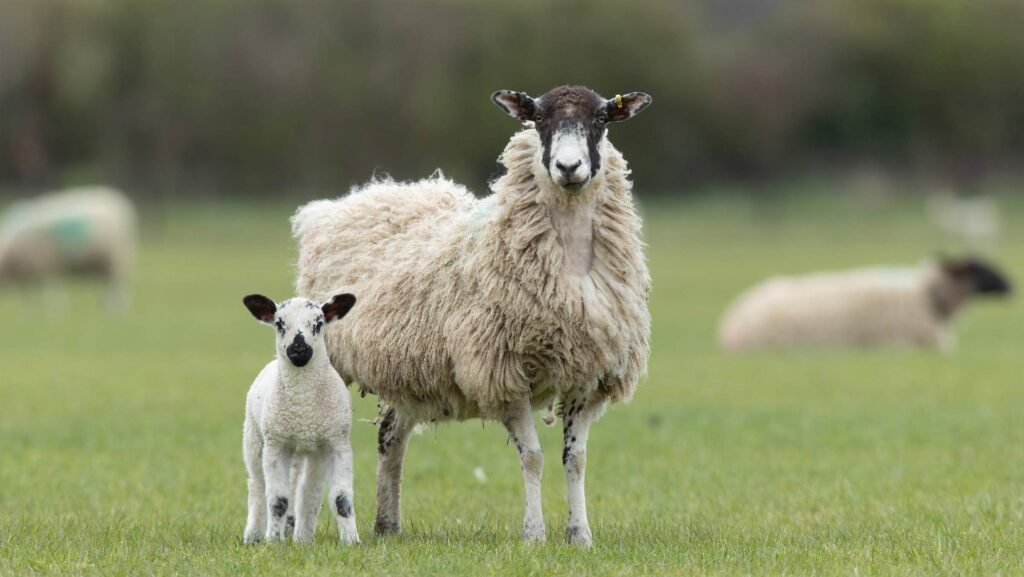Farmers say more data needed on Schmallenberg impact
 © Tim Scrivener
© Tim Scrivener Farmers are calling for a more definitive method of recording cases of Schmallenberg virus, as the true extent of the issue remains largely unrecorded.
Sheep farmers across the country have repeatedly expressed concerns, as this year’s lambing season has seen the highest numbers of affected flocks within the past five years.
See more: Surge in cases of Schmallenberg impacting lambing
Phil Stocker, chief executive of the National Sheep Association (NSA), said that the organisation has received worrying reports from farmers across the country.
“It is definitely rife,” said Mr Stocker. “It seems to be at its worst through the West Midlands belt from Somerset, up through Gloucestershire, Herefordshire, Worcester and into Shropshire.
“That’s where we’re hearing about the biggest losses.”
Mr Stocker explains that Schmallenberg tends to follow a four- or five-year pattern, with ewes building up some immunity.
The disease was first detected in the UK in 2012 with a large initial outbreak – an event which was followed by years of lower instances, before a peak in 2017.
“The critical time is if in-lamb ewes are bitten from day 10 to 65 – essentially that first one-third of pregnancy – then the unborn lamb has got a high chance of being affected,” said Mr Stocker.
“If they are bitten outside of that, then they build up immunity and carry that for quite some time.
“It is causing some real stress and anxiety. When you talk to the farmers going through it, the first thing they will mention is anxiety, and stress and depression.”
Vaccine
While a licensed vaccine for Schmallenberg does exist, it is not currently in production or available in the UK.
“A lot of people who have been badly hit this year have said that they would use a vaccine every year from now on.
“They wouldn’t run this risk again – it has just been devastating,” said Mr Stocker.
“The vaccine manufacturers have had their fingers burnt on this before, when they’ve produced a load and not seen the uptake.
“But I think there would be enough demand for there to be a production of vaccines this year.”
To try and build an accurate picture of the number of losses this year, and to give the vaccine manufacturers hard industry evidence, Mr Stocker says affected farmers should be regularly in touch with their vets.
“They should be talking to their vets about samples being submitted to the veterinary investigation centres for proper analysis, because this is a relatively new virus.
“The symptoms can be quite classic, although quite often you will just get aborted lambs, or lambs that are born alive and just don’t survive and you struggle to get them going.
“Unless you get a few analysed, it’s going to be very difficult for us on an industry scale to see what is going on.”
Devastating loss
Shrewsbury sheep farmer Ben Lowe has lost 40% of his pedigree Texel lambs to Schmallenberg this year, with devastating emotional and financial losses.
He says that farmers need a reliable mechanism to be able to report and quantify the losses that they have had, and has called for a Defra-led survey.
“The biggest concern of mine at the moment is that the whole situation is massively under-reported and under-quantified,” he said.
“Schmallenberg is silent and kept in lambing sheds, kept quiet with farmers that are struggling with it.
“The only difference with something like bluetongue is that it is so much more demonstrative in the way that you have adult cattle and sheep, throats swelling and tongues swelling, dying in front of you.”
Usually lambing alongside his two sons, Ben has had to keep them away from the lambing sheds this year due to the high number of traumatic losses.
“You always have losses, and that’s enough to break your heart. But with all of this, you’re just helpless.
“You get to the point where you’re snapping legs to get them out. I’m sorry to be so graphic, but it is the reality,” he said.
“These fused limbs are so stiff that you have to snap the legs to be in a position to get the lamb out.
“What really got to me was, the first few that we had were dead, but then I started getting them alive, with fully fused legs, and you’re having to shoot them.
“I can’t put either myself or my boys through what we went through again.”
He hopes that with a widespread survey, the industry will have a shot at getting a Schmallenberg vaccine back into production.
“We need a vaccine. Especially from a food security point of view when we have uncertain times ahead of us and a massive potential loss in lamb production in the UK.”
